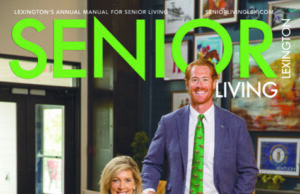Less is More
Downsize, Declutter, and De-Stress
Minimalism and simplicity have become such popular movements, it’s no longer just the baby boomers who are looking to downsize, declutter, simplify, and organize. The LA Times found that the average American home contains around 300,000 items. And according to the Wall Street Journal, Americans spend $1.2 trillion each year on nonessential goods — meaning things they don’t need.
Most of us could do more with less.
There is no “right” age to begin the process, just as there is no “right” age to begin a “diet” — instead, just like with proper nutrition, consider it a lifestyle choice — a way of living. Although Marie Kondo’s bestseller has been a little too trendy in recent years, The Life-Changing Magic of Tidying Up offered concrete, useful strategies:
- Discard by category, not by room.
- Break down a category into manageable bites (“clothes” can be grouped into dozens of subcategories).
- If an item doesn’t “spark joy,” say thanks for the memories and send it on to its next adventure.
- After you’ve discarded and decluttered, then you can organize.
Downsizing can be a stressful process that takes a mental and physical toll — but it doesn’t have to be that way.
Prepare in advance, set a realistic timeframe, and approach it one step at a time.Make it fun. Put on your favorite music. Or turn on your favorite TV show and just work during the length of each commercial. Invite friends and family and send them home with a few treasures you no longer need or want. (Banish the guilt. Every generation is going to pass on its fair share of Pelotons.)

Downsizing looks different for everyone, and it is best to first decide what it looks like for you.
Evaluate your reasons, whether it is maintenance, cost of living, or health issues that are informing your decision. Perhaps you’re moving from a large single-family home to a more manageable condo? You might be considering moving in with family members? Or you could just be motivated to declutter your space and reduce fall-risks.
Deciding what stays and what goes is a vital and meaningful part of the downsizing process. Many items will be mementos, others will contain memories, yet at the end of the day, the bottom line is you can keep the memories without the clutter. If you can live without it, you can do without it.
Items that are no longer needed can go on to a new home, or a new use, and can often be repurposed or recycled — whether that involves donating them to a good cause like your local Habitat ReStore, or using a yard sale or marketplace to generate extra funds.
And never hesitate to call in a professional if the process seems too overwhelming. There are dozens of local organizers and moving-concierges who offer an array of services to fit a variety of budgets. □
____
This article also appears on page 34 of the 2021 Senior Living Lexington Guide.
To advertise in Senior Living Lexington, call 859.361.4169









